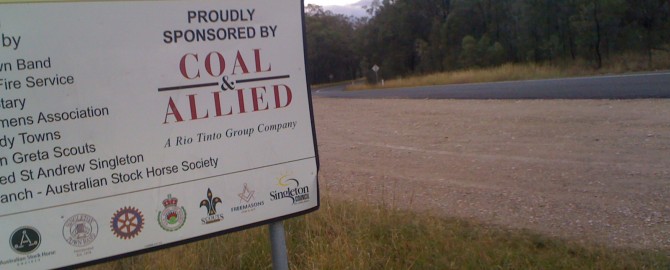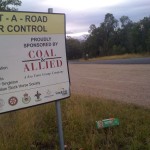I just had a quick look at a report written by PwC for the NSW Minerals Council, Potential to unlock value in the mining sector through planning reforms in NSW (you have to scroll through to the PwC section). The report highlights the recent Warkworth decision in the NSW Land and Environment Court as a factor contributing to “delay and uncertainty” for the NSW mining industry. Terrifyingly, this could lead to “29,000 jobs at risk”.
Gee, that sounds bad….but recall that a key factor in the Warkworth judgement was Judge Preston finding:
I am not satisfied that the economic analysis provided on behalf of Warkworth support the conclusion urged by both Warkworth and the Minister, namely that the economic benefits of the project outweigh the environmental, social and other costs.
Part of that economic analysis that didn’t convince the judge was input-output modelling. The Warkworth proponents’ consultants, the Hunter Valley Research Foundation, had used input-output analysis to estimate that the project would “create” 44,000 jobs. Preston CJ found:
The [input-output] analysis is a limited form of economic analysis…The deficiencies in the data and assumptions used affect the reliability of the conclusions as to the net economic benefits of approval. More fundamentally, however, the [input-output] analysis does not assist in weighting the economic factors relative to the various environmental and social factors…
So when a judgement has criticised your claims based on an input-output study, what’s a lobby group to do? I know! Commission another one! Does anyone else see the irony in commissioning an input output study as a rebuttal to a judgement that smacked down input output studies???? Did no one at PwC think about this before writing:
Results indicate that up to 6,450 fewer direct jobs would be generated compared to a business as usual case for this scenario. Using an input output multiplier, this could mean up to 22,400 fewer indirect jobs.
I could go on at length about why these figures are misguided, but the most simple explanation is because the model assumes that there is a limitless pool of qualified, unemployed coal miners sitting around in NSW with nothing better to do and that they won’t be taken away from other jobs or other industries.
Where are the economists who think this is decent analysis? Can we expect Ross Garnaut or Warwick McKibbin to come out in defence of this? Not likely. How about an officer from the ABS or NSW Treasury….maybe….oh no, hang on, they said this:
Input-Output (Multiplier) Analysis is commonly used to assess the regional impacts of a project. In the simplest form of input-output analysis, input-output multipliers are applied to measures of direct impact to determine estimates of flow-on impacts in terms of income and employment. All such analysis is subject to significant limitations, and extreme care should be taken in its interpretation. NSW Treasury (2007) p12
Production of [input output] multipliers was discontinued with the 2001–02 issue for several reasons. There was considerable debate in the user community as to their suitability for the purposes to which they were most commonly applied, that is, to produce measures of the size and impact of a particular project to support bids for industry assistance of various forms. ABS
So there you have it. If your first study doesn’t succeed, try, try again. Peter Martin in the SMH predicted a while back that the Warkworth judgement meant that
It will never again be safe to come up with a big number for jobs created (”direct and indirect”) expecting the decision-maker to give it a tick because it’s the outcome of an economic model.
Don’t bet on it, Peter, don’t bet on it!



Deja vu Rod was my response when I saw the story in The Australian Business yesterday (I didn’t buy the paper because they print this sort of thing as real jobs lost).
Do reputable economists and commentators like Ross Gittins, Richard Denniss, Bernard Keane, Tim Colebatch, Peter Martin and others have to write a story every time refuting these “phantom jobs” reports? The rules of propaganda are simple: repeat it often enough and it gets embedded in the public’s mind. The truth, spoken once is outnumbered by the output from the input-output sausage machine.
Thanks Rod for your thorough approach.